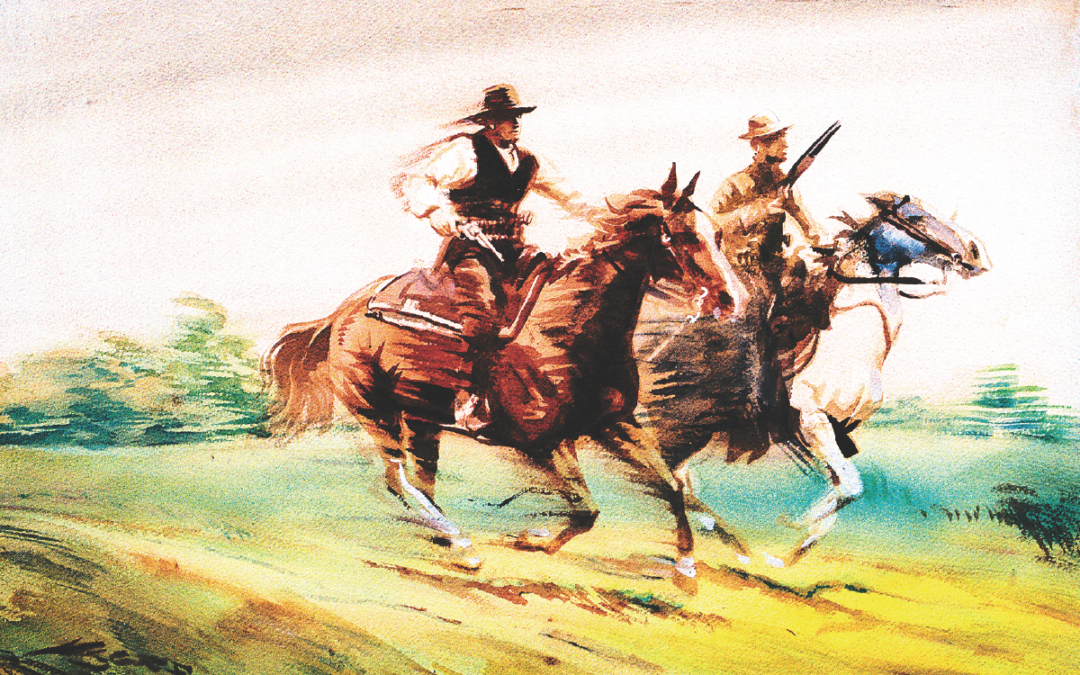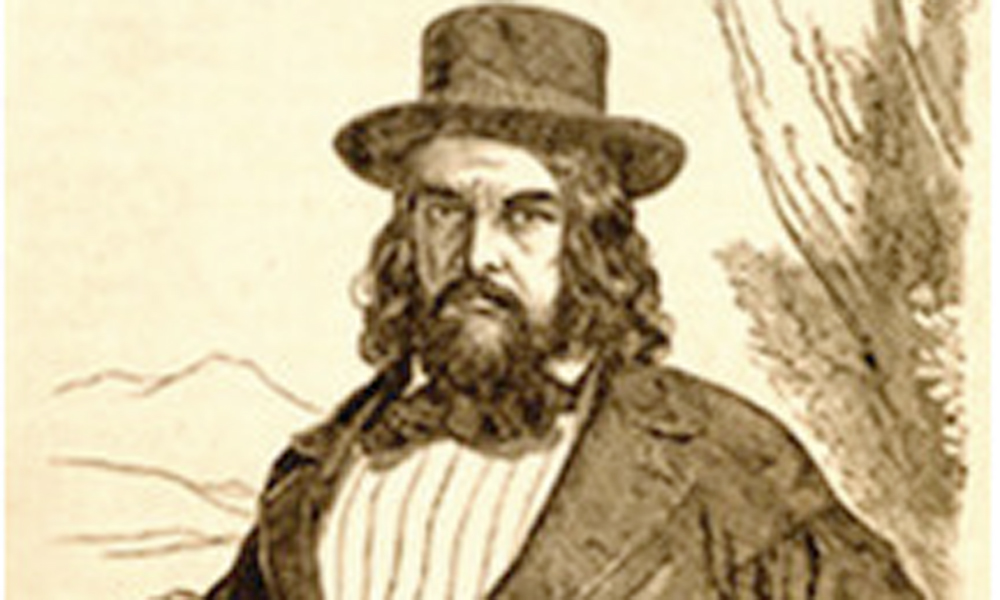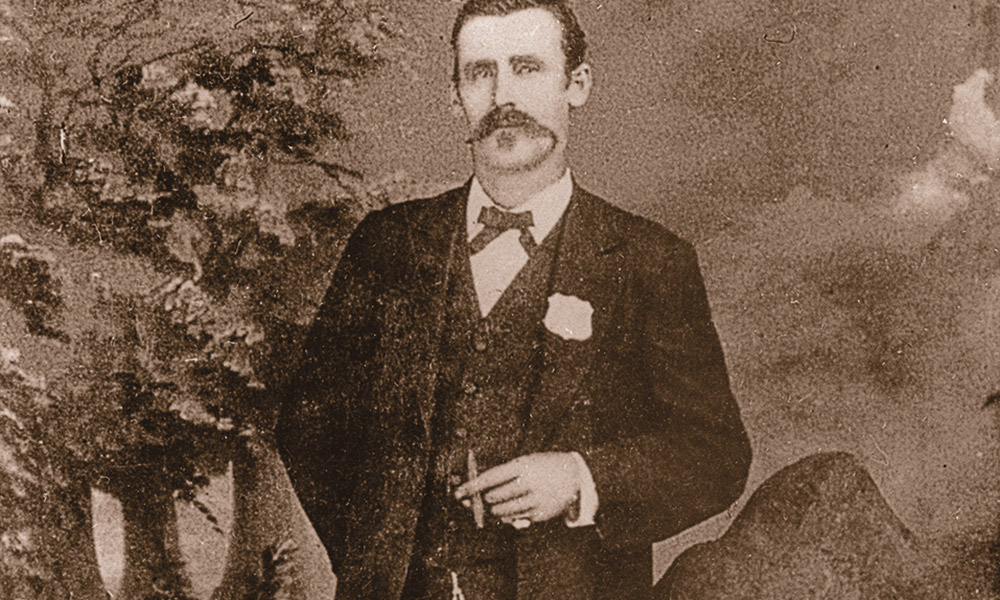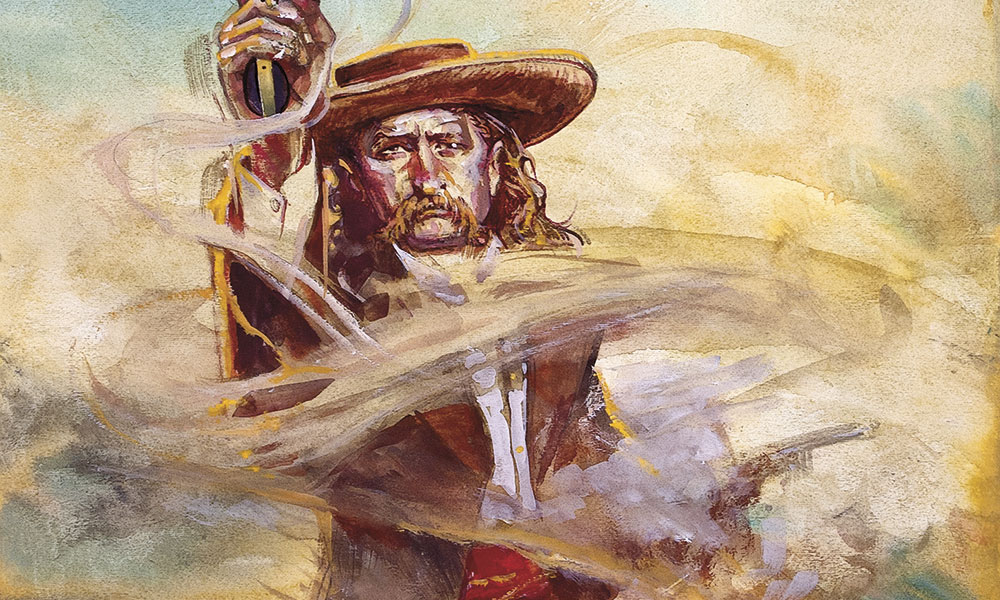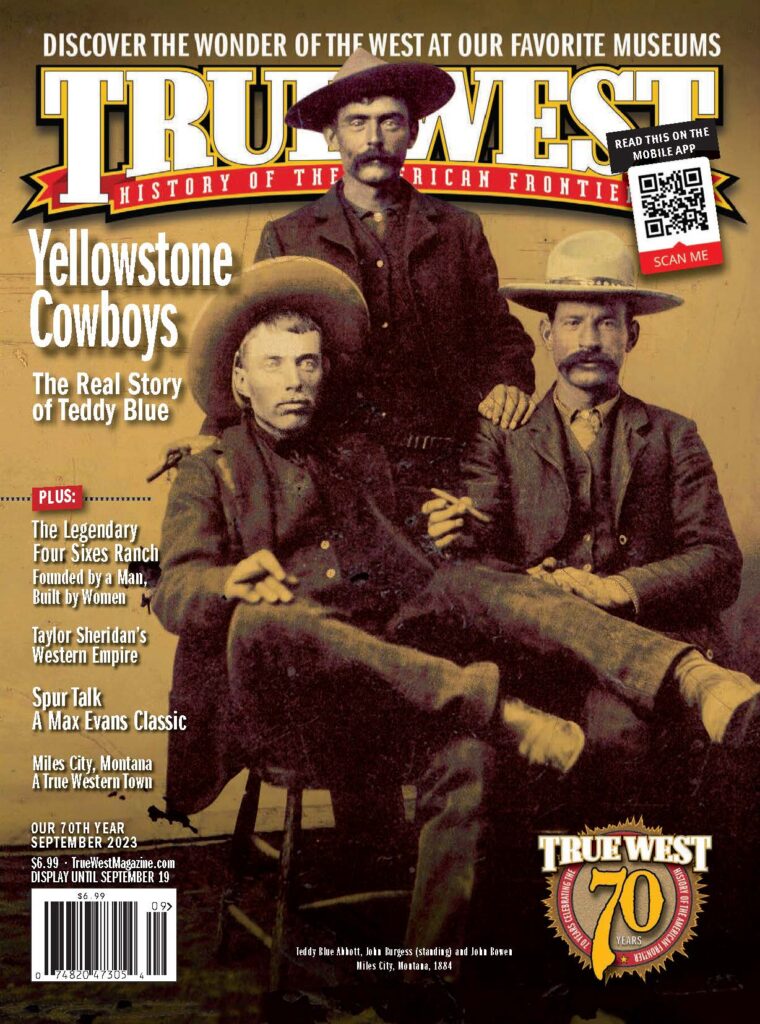The Youngers vs. The Pinkertons
The Bushwhackers Score A Goal
Shot Down in the Missouri Wilds
Based on the research of John Langellier and Jack McPhee
All images True West Archives unless otherwise noted Illustrations by Bob Boze Bell
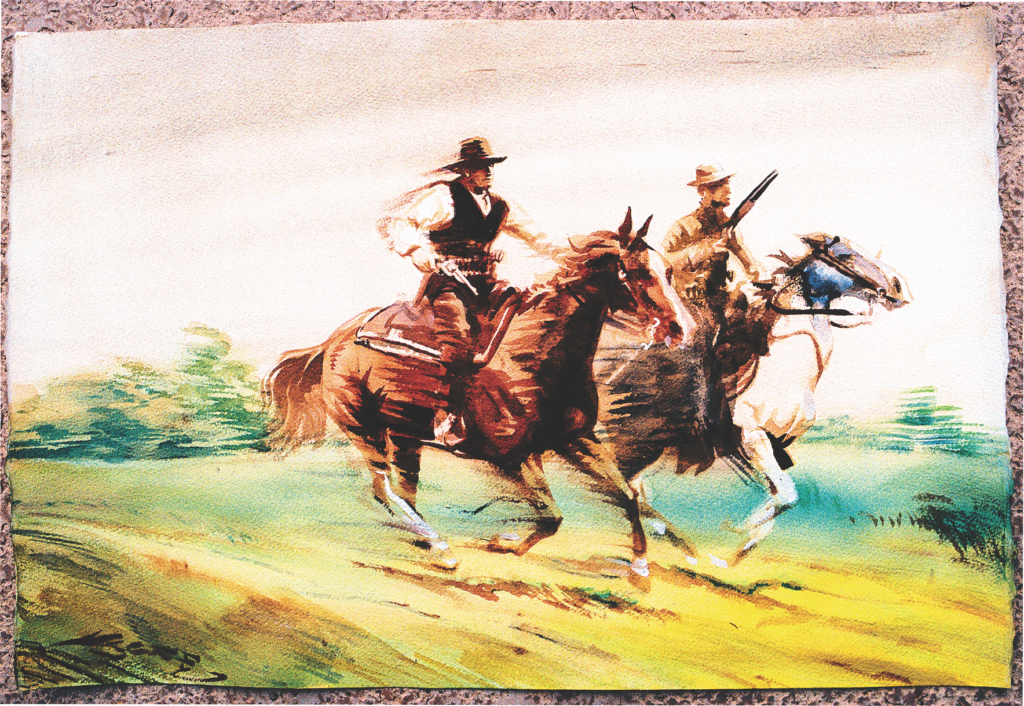
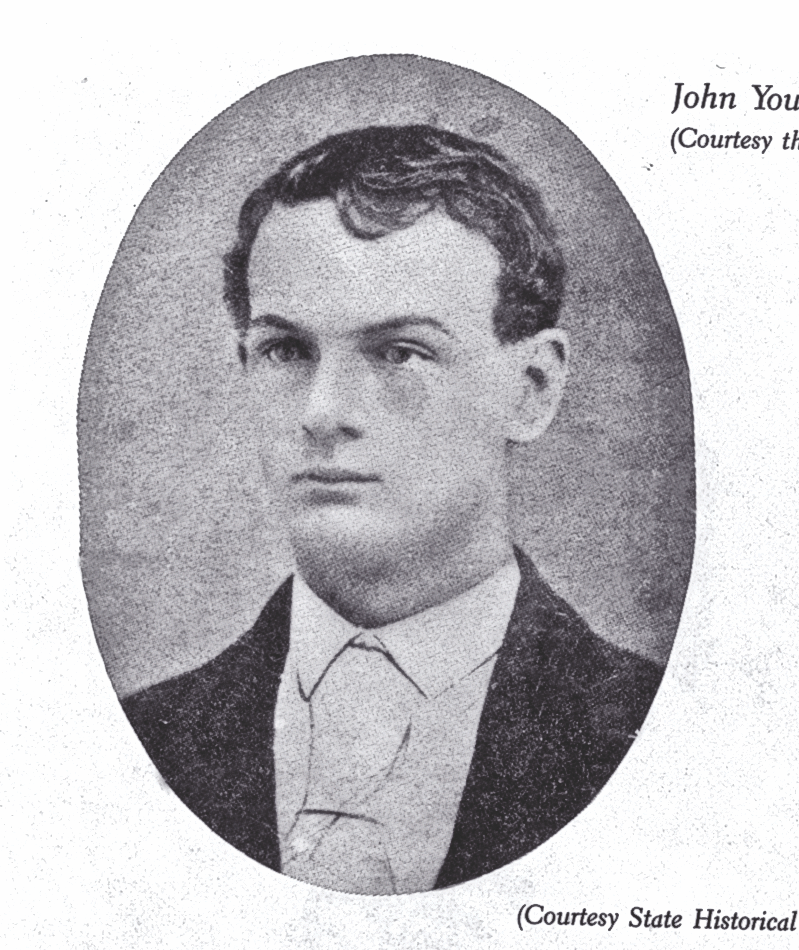
March 17, 1874
Around 2:10 p.m., the Snuffer family and John and Jim Younger are sitting down for dinner at Theodrick Snuffer’s homestead.
As they eat, the Youngers hear horses coming up the lane, so they quickly scramble up a ladder into the attic. Peering through a crack between the logs, they see two strangers telling old man Snuffer they’re “cattle buyers.” One of the riders asks Snuffer for directions to Widow Simms’s (or Sims’s) house, as she advertised livestock for sale. Snuffer points the way, but the two ride off in the wrong direction.
John becomes suspicious and wants to follow them. Jim demurs, stressing he isn’t looking for trouble, and he sits down to finish his meal. John presses his argument, pointing out that both strangers are too well armed to be simple cattle buyers and that the younger of the two looked nervous.
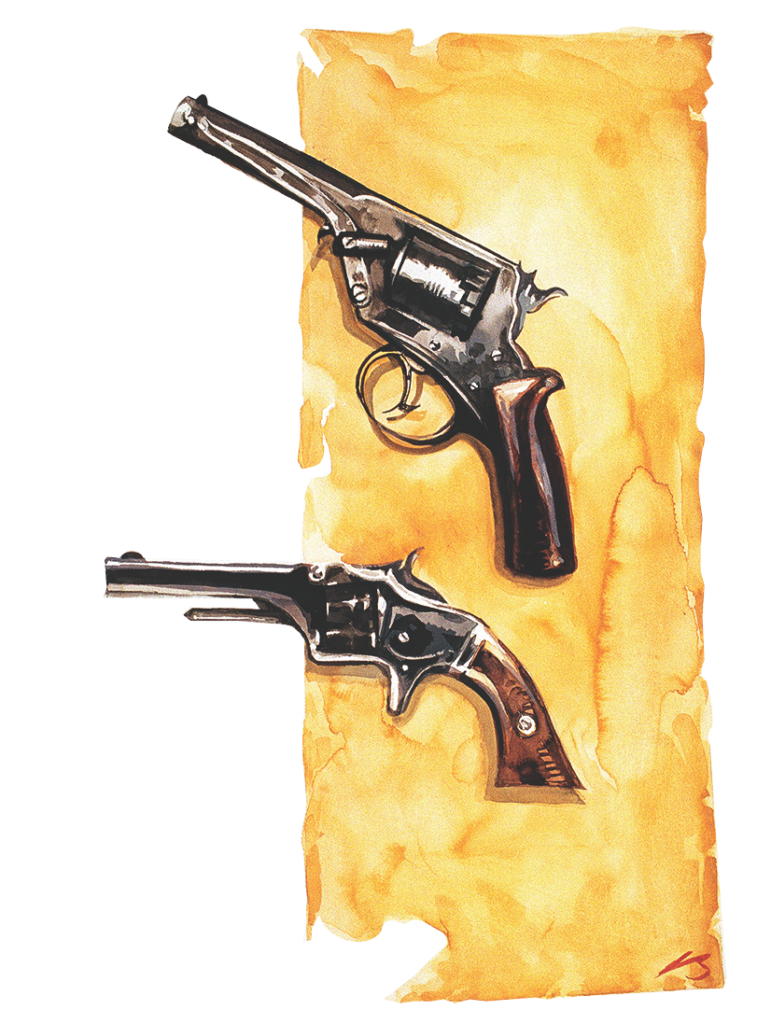
which needed to be cocked before firing. Lull amazingly pulls it from concealment and cocks, aims and fires it before John Younger can react.
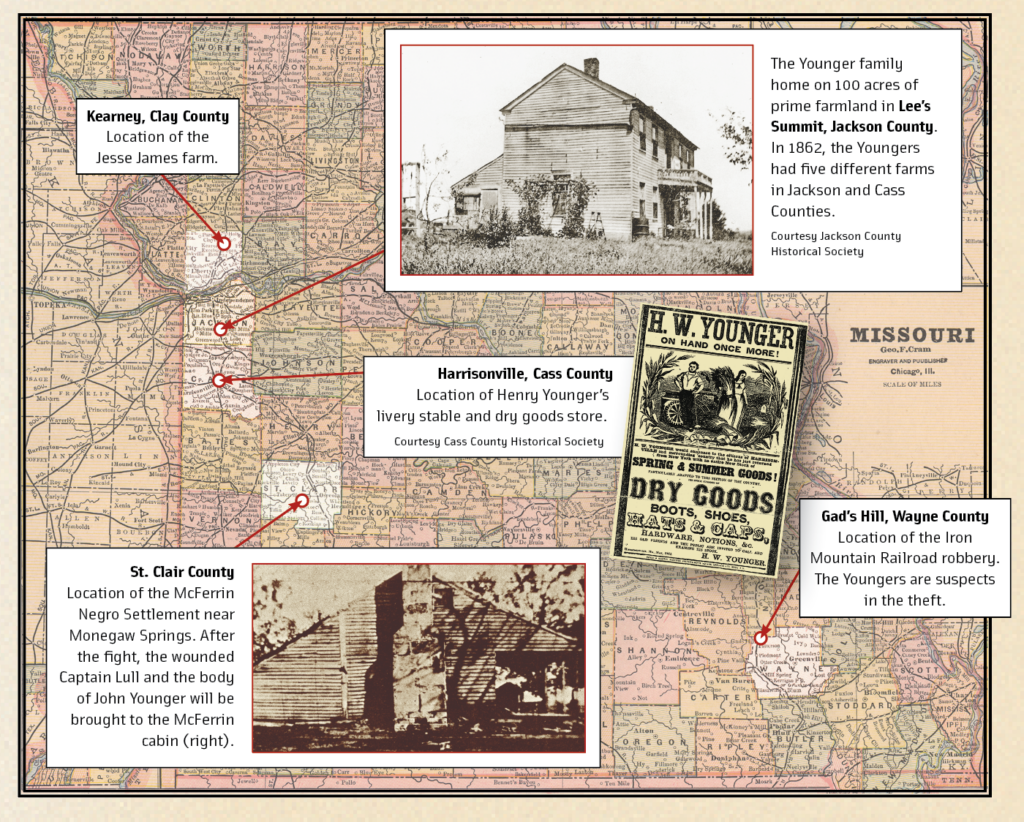
Jim finally gives in and agrees to accompany his younger brother. The two gather their horses from the Snuffer shed and give chase.
Three-quarters of a mile up the road, the two “cattle buyers,” Louis Lull and Ed Daniels, join up with James Wright, who is from the area and stayed behind because he was afraid the Snuffers would recognize him. The trio converse about their search for the James-Younger Gang while riding their horses at a slow gait.
When the Youngers approach on horseback, Wright pulls his pistol, spurs his horse and gallops away, cutting across a field as fast as his horse can carry him (ironically, heading east toward Widow Simms’s house). Jim orders Wright to stop, and when he doesn’t, Jim fires a pistol ball that takes off Wright’s hat.
John has both barrels of his double-barreled shotgun cocked. He covers Lull and Daniels until Jim rejoins them. The Youngers order the two strangers to give up their guns. Both men comply, dropping their revolvers on the road. Jim dismounts to gather the weapons, which include Lull’s English-made .43 caliber Tranter, a Pinkerton standard issue.
Holding up the exotic pistol for his brother to see, Jim says, “John, these are damn fine guns. It’s sure nice of these boys to make us a present of them.” Jim then turns back to the prisoners and asks, “Where you fellas from?”
“We’re from Osceola,” Lull replies.
“What are you doin’ out here?”
“Just ramblin’ around.”
John cuts in, “You sure you’re not detectives looking for someone?” He tells them detectives have been up here hunting them all the time, and they are going to stop it.
“I am no detective,” Daniels says. “I can show you who I am and where I belong.”
One of the Youngers admits to having met Daniels in town, so he turns to Lull and demands: “What the hell are you riding around here with all them pistols on for?”
“Good God,” Lull pleads. “Is not every man wearing them that is traveling and have I not as much right to wear them as anyone else?”
“Hold on, young man,” John barks. “We don’t want any of that.”
John lowers his shotgun for a moment. (One report says John was trying to “quiet his horse.”) With John’s attention diverted, Lull reaches behind and pulls out a small No. 2 Smith & Wesson pistol and fires. Lull’s horse lurches forward just as the bullet strikes John’s neck. Reacting, John pulls the trigger on his shotgun and the pellets hit Lull in the shoulder and arm.
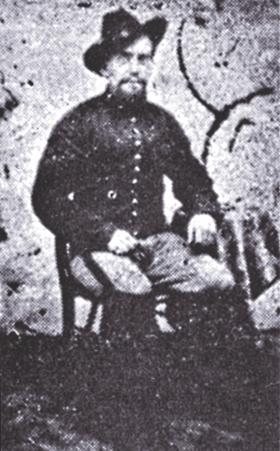
Lull barely manages to stay in the saddle as his horse explodes down the road. On horseback, Daniels attempts to follow suit, but Jim shoots him in the neck. Daniels falls off the back of his mount onto the roadway.
Down the road, Lull has no control over his horse as it jumps “into the bushes and the trees.” Lull later says he tried to get ahold of the reins with his right hand to “bring him on the road,” but John “rode by me and fired two shots at me, one of which took effect in my left side, and I lost control of my horse and he turned into the brush and a small tree struck me and knocked me out of the saddle.”
Meanwhile, Jim rolls Daniels over and immediately sees his death stare. Jim looks up and sees John coming back from the grove. He calls out his brother’s name. John quizzically stares at his older brother, then slowly falls sideways, landing on the other side of a fence.
Jim runs to John’s side, but his brother is dead. Lull’s bullet severed John’s jugular vein. (It’s amazing he lived as long as he did.)
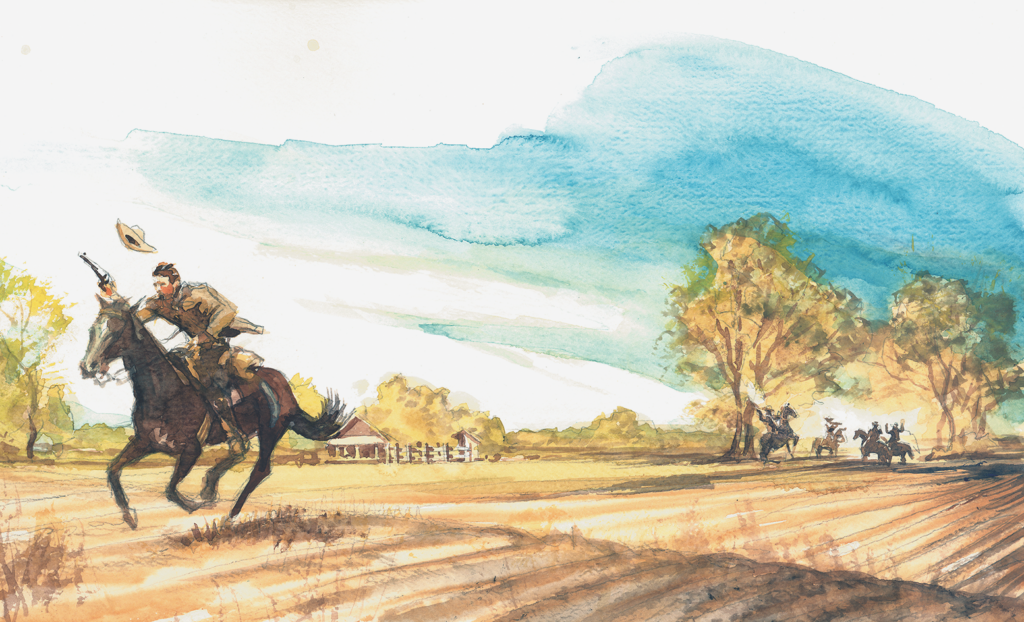
The Younger Brothers
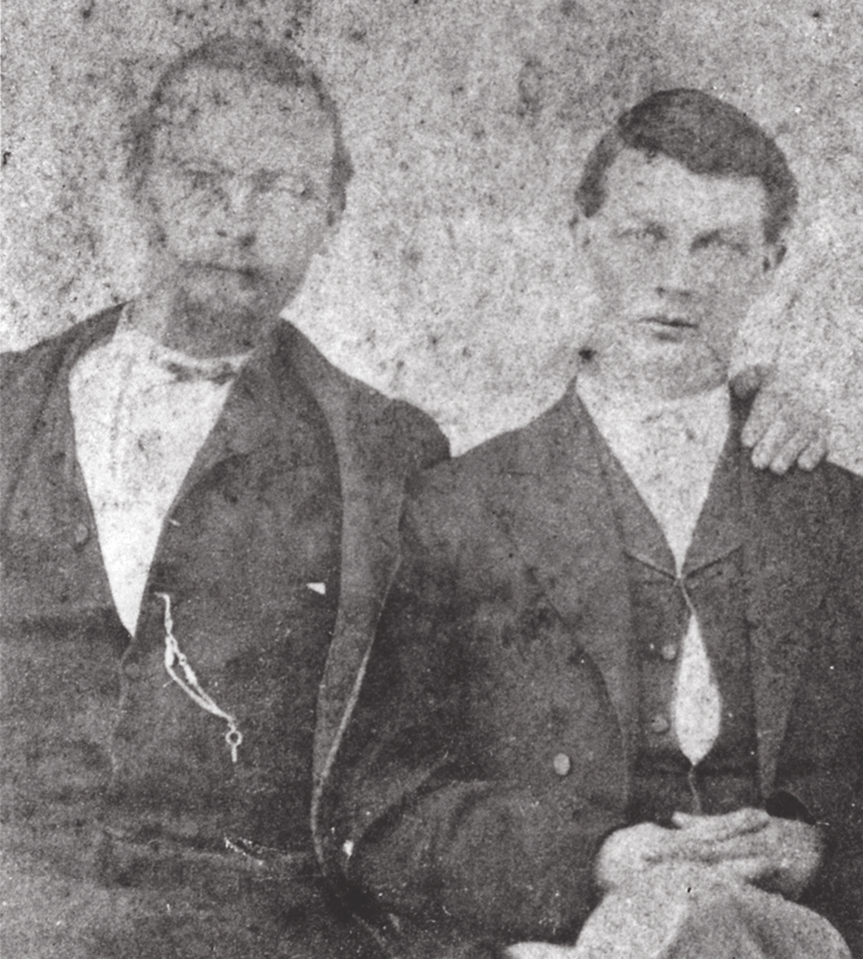
All four brothers—Cole, 30; Jim, 26; John, 23; and Bob, 21—are suspected of participating in several robberies, including the Gad’s Hill train robbery. The boys travel in pairs and move around continuously. They spend little time in their home county (see map) but occasionally stop in St. Clair County, where they visit friends, including the Snuffers. For the most part, they spend their nights in the McFerrin Negro Settlement, three miles southeast of Monegaw Springs, where they stay with John McFerrin and his wife, Hannah, who worked for the Younger family in Jackson County. The McFerrin home is a safe haven until the Pinkertons begin to close in.
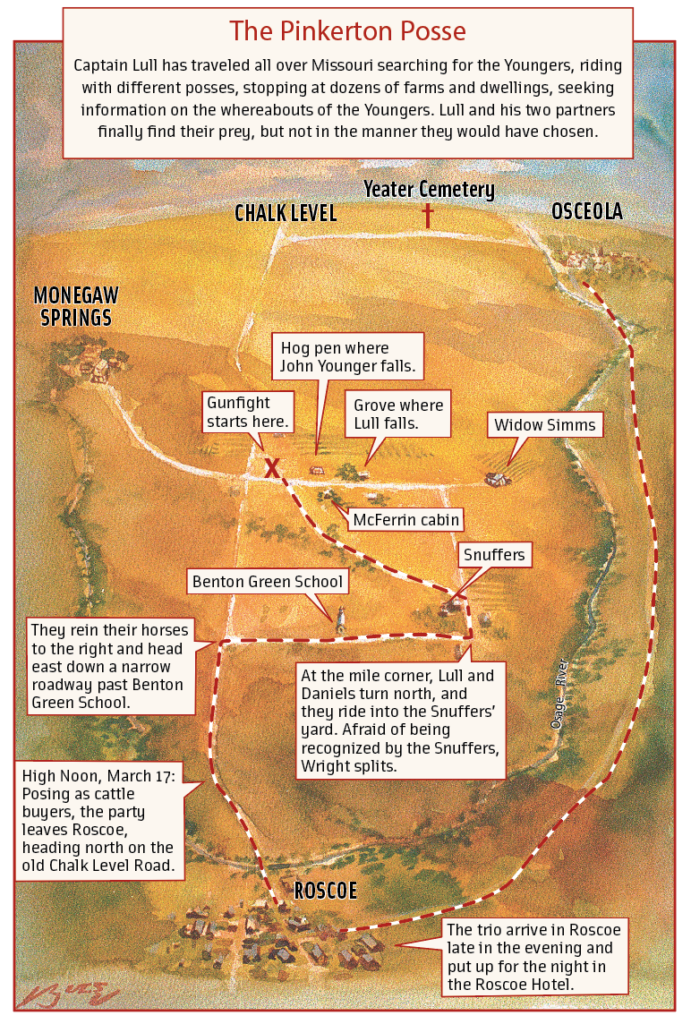
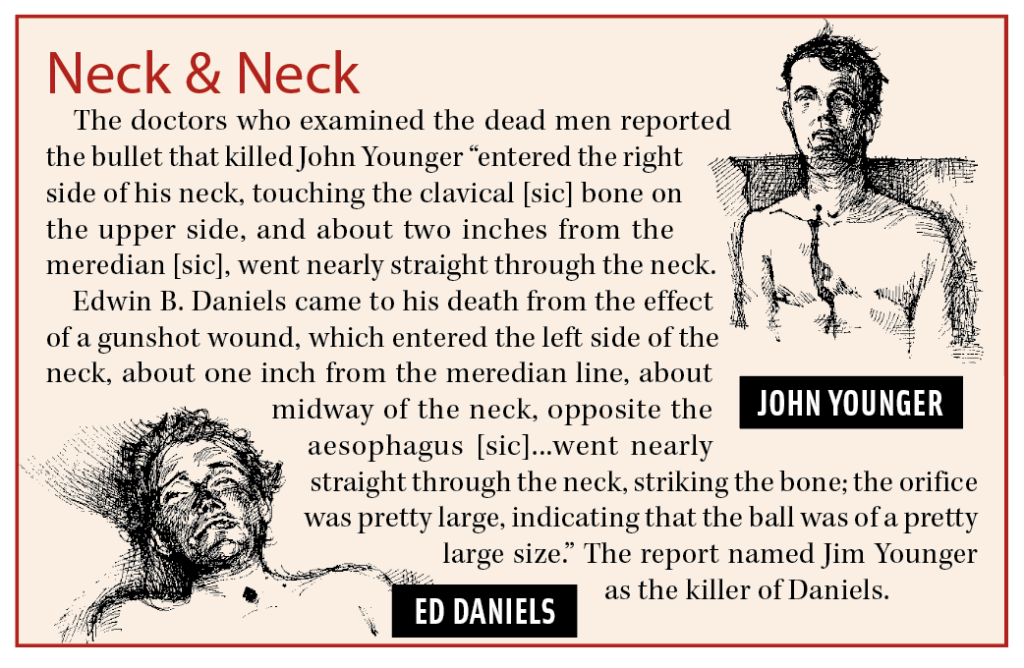
Why Did Captain Lull Resort to Deadly Force?
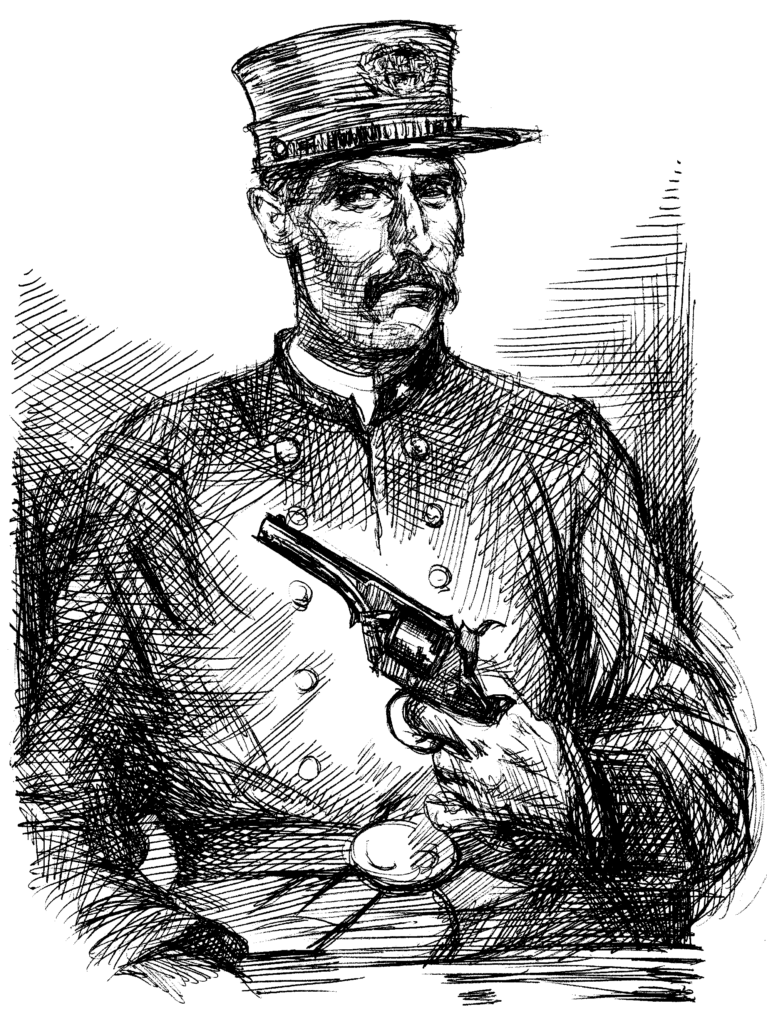
Severely wounded, Lull, still claiming he is W.J. Allen, gave the following statement to the coroner’s inquest:
“[The Youngers] said detectives had been up there hunting for them all the time, and they were going to stop it. . . .” John Younger “then lowered the gun, cocked it in a threatening manner. . . . I concluded that they intended to kill us. I reached my hand behind me and drew a No. 2 Smith & Wesson pistol and cocked it and fired at the one on horseback, and my horse frightened at the report of the pistol and turned to run, I heard two shots and my left arm fell, and then I had no control over my horse. . . .”
At the time of the gunfight, Lull’s mind may have been consumed with the fate of fellow undercover Pinkerton agent J.W. Wicher, who was found murdered near Kearney, Missouri, only seven days earlier, on March 10. It is rumored Jesse James and others got him.
Just three months prior to this road battle, the Youngers surprised a posse from Appleton City who had ridden to Monegaw Springs to capture the brothers. Taking the offensive, the Youngers captured the posse and confiscated their weapons. But after a stern warning, the Youngers released them.
Perhaps the Youngers intended to do the same with Lull and Daniels. We will never know.
Aftermath: Odds & Ends
Jim Younger removed his brother’s pistols, watch and other personal effects. Mounting John’s horse, Jim asked a neighbor who had witnessed the fight to take care of his brother’s body. Then Jim rode up Chalk Road in the direction Detective James Wright had fled. Unable to find him, Jim returned to the Snuffer cabin to ensure John would be buried properly and then headed south to Arkansas to inform his brothers, Cole and Bob, about John’s death.
Incredibly, Lull wasn’t killed outright by the shotgun blast to his shoulder and arm, or the pistol shot to his chest. Found by a farmer, Lull was taken to a nearby cabin and, later that evening, was placed in a spring wagon and driven to Roscoe. A town doctor declared that the wounded detective would live, but, after several days, the Pinkertons reported Lull’s condition had worsened and he died. Many in St. Clair County believed this to be a ruse and that the detective hadn’t died, but that he just needed protection from the Youngers’ wrath. In spite of this rumor, hundreds of Chicago policemen attended Lull’s funeral and the former captain—or an empty casket—was laid to rest in a spacious Chicago cemetery.
After filing a report with Sheriff Johnson in Osceola, Detective Wright was never heard from again.
John Younger was first buried under a large cedar tree near the Snuffer cabin, where his shallow grave could be guarded. Later, his body was interred in the nearby Yeater Cemetery. The Snuffers and friends buried John at an angle, with his head pointed northwest, so they could later recognize the grave. (They were afraid to mark the grave lest the anti-Younger faction came to desecrate it.)
Two years later, Jim participated with his brothers, Cole and Bob, in the botched raid on a Northfield, Minnesota, bank (see Classic Gunfights Vol. I). Jim was badly wounded and captured in the Hanska Slough shoot-out two weeks later (as were Cole and Bob). He served 25 years in prison, was partially pardoned (with the restriction that he had to remain in Minnesota) and committed suicide in 1902.
Recommended: The forthcoming Illustrated Life & Times of Jesse James by Bob Boze Bell, coming this holiday season.

